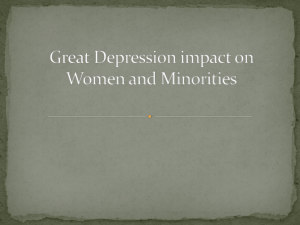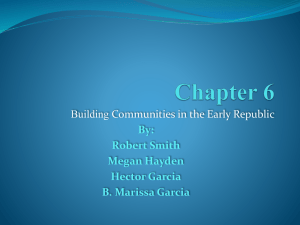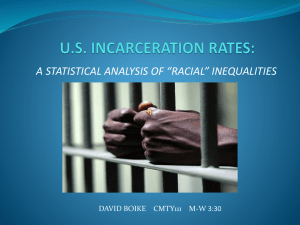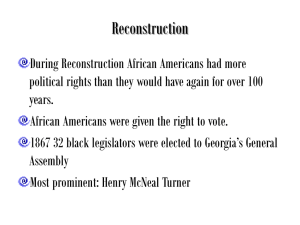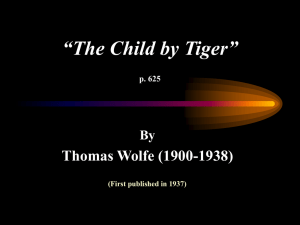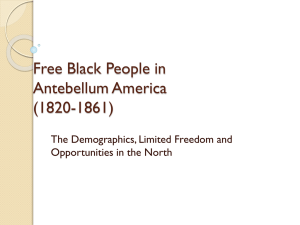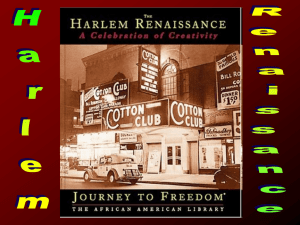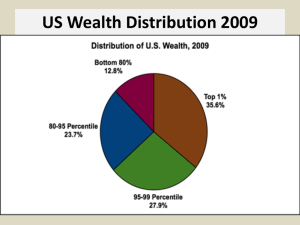Free Black People in Antebellum America (pt.2).
advertisement
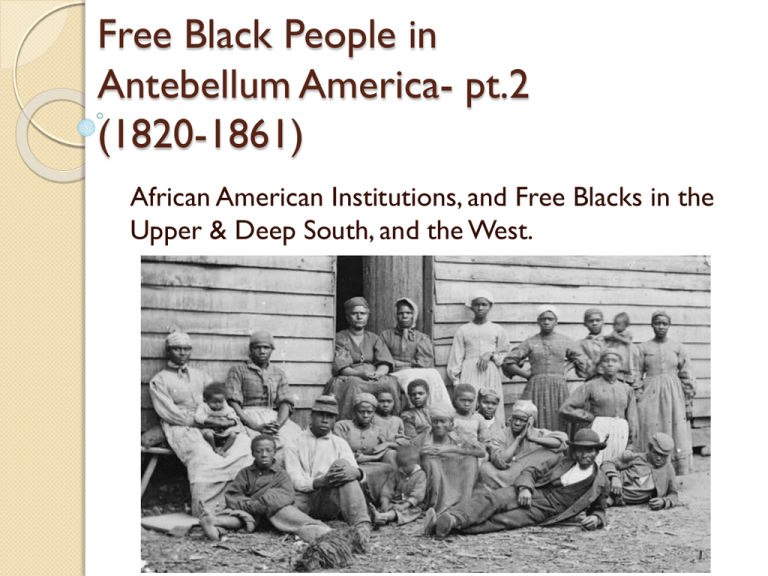
Free Black People in Antebellum America- pt.2 (1820-1861) African American Institutions, and Free Blacks in the Upper & Deep South, and the West. African American Institutions: Black Churches Black churches were community centers that housed a variety of organizations as well as schools. They were particularly used for antislavery societies and housing fugitive slaves. Black ministers led the congregations to help start schools and voluntary associations, as well as speaking out against racial injustice, slavery, and the weaknesses of the community. Although churches sometimes promoted the message of equality, many worked toward the afterlife as the ultimate goal. The AME church had 296 congregations with over 17,000 members in 1846, but many blacks remained with white affiliated churches. White churches treated blacks as secondclass citizens. They would have to sit in “negro pews,” and received communion after the whites. African American Institutions: Schools Education remained segregated in the North between 1820 and 1860, with very few schools becoming racially integrated. In the old northwest, blacks were excluded from public schools and the government made no attempt to fund separate schools. The northeast was more willing to set up separate schools. Overall, black public school funding was lagging far behind. Segregated schools tended to be run down, over crowded and poorly taught. This led to black leaders favoring racially integrated schools in the 1830’s. With the help of Frederick Douglass and others, Massachusetts pushed to desegregate all schools by 1855. Black elites had more opportunities then children, and schools such as Ashmum Institute (Lincoln Uni.) became the 1st black college in 1854. African American Institutions: Voluntary Associations Voluntary Associations included mutual aid, benevolent, selfimprovement, and fraternal organization. Women took a leading role in the mutual aid societies and led groups such as the African Dorcas Assoc. and NYC’s Assoc. for the Benefit of Colored Orphans. Fraternal organizations like the Prince Hall Masons and Black Odd Fellows lodges united black men. The most prevalent were self-improvement, library, literary and temperance organizations which came out of the reform spirit following the revolution and into the 1830’s. Phoenix Literary Society (NY), and Boston’s Adelphi Union for the Promotion of Literature and Science are examples. Black temperance societies were also wide-spread and led by middle class activists. Free African Americans in the Upper South Although free blacks in the upper south shared commonalities with northern free blacks through institutions and family/organizational bonds, they differed in many ways. Only 1/3rd of free blacks lived in cities, and those in the rural areas lived along side slaves and took more direct roles in their freedom. They prevented the selling south of slaves, reimbursed manumisson, and funded freedom suits. They also were at high risk of being enslaved since their freedom papers could be lost or stolen, and if they were in debt their creditor may sell them into slavery as a way of collecting debt. Also, the upper south had far more restrictive policies and more segregated facilities' then in the north. Economically, blacks had less options in the upper south as well. Free African Americans in the Upper South Tenant farming was very popular in this region and put free blacks into a contract with a landowner which submitted them to semi-slave conditions. Rural Jobs: miners, lumberjacks, and teamsters. Urban Jobs: unskilled day laborers or as butchers, barbers, tailors, waiters, white washers and stevedores. Due to less European immigration into this region, many freed blacks worked in factories up until the 1850’s when an influx of immigrants came to this region. Immigrants pushed blacks out of skilled positions. Black institutions also struggled in this region due to the southern slave rebellion policies. Schools struggled the most. Elizabeth Clovis Lange and John F. Cook were two famous black educators who fought to continue black education. Free African Americans in the Deep South Most of the South’s free black population resided in the Chesapeake Region and numbers declined sharply to the south and west. Many of the free blacks in the deep south were the byproduct of illicit sexual relations between masters and female slaves, but some were Haitian refugees. A 3 caste system emerged: Whites, Blacks, and Slaves Like the Latin American counterpart, the blacks identified themselves with their masters, not with other slaves. This was also fostered by formalized relationships mandating free blacks to have a white guardian. Loyalty was gained through giving privileges to the free blacks, such as employment, loans, protection, rights to vote and sue whites in court. Free African Americans in the Deep South This system of loyalty also influenced the growth of exclusive black institutions, such as churches which were mainly white denominations unlike the AME churches of the north. Free blacks in the deep south also lived in the highest urban concentrations, with 50% living in cities. They also held stronger positions in skilled labor forces. Free blacks made up only15% of Charleston’s population, but also accounted for 40% of the tailors, 25% of the carpenters, and 75% of the millrights. There were still free black communities and organizations. Prince Hall Masons and other fraternal organization had chapters in the deep south. They also had several benevolent organizations. Free African Americans in the Far West From the Great Plains to the Pacific Ocean, very few black people had appeared at this time and only a few isolated areas had black communities. Discriminatory black laws in these western regions banned black settlement or restricted their activities. This was very much like the old northwest. Blacks settled in Oregon in the 1840’s, as well as in California after the Gold Rush of 1849. By 1852, over 2,000 blacks inhabited CA. Blacks worked as gold prospectors, steamship stewards, cooks, barbers, laundresses, mechanics, saloonkeepers, white washers, porters and domestics. Black communities in these regions centered around churches in San Francisco, Sacramento, and Los Angeles. Conclusions Northern African American communities grew and fostered institutions that shaped the black culture into the 20th century. Extended families, churches, segregation, political marginality, and limited educational opportunities impacted their lives. Life for blacks in the upper & deep south was difficult. The danger of enslavement and restrictions limited their freedom. The social ties between freed blacks and whites in the deep south had an impact on the development of black institutions in the region. Western African Americans began emerging at this time, but remained low in numbers.

